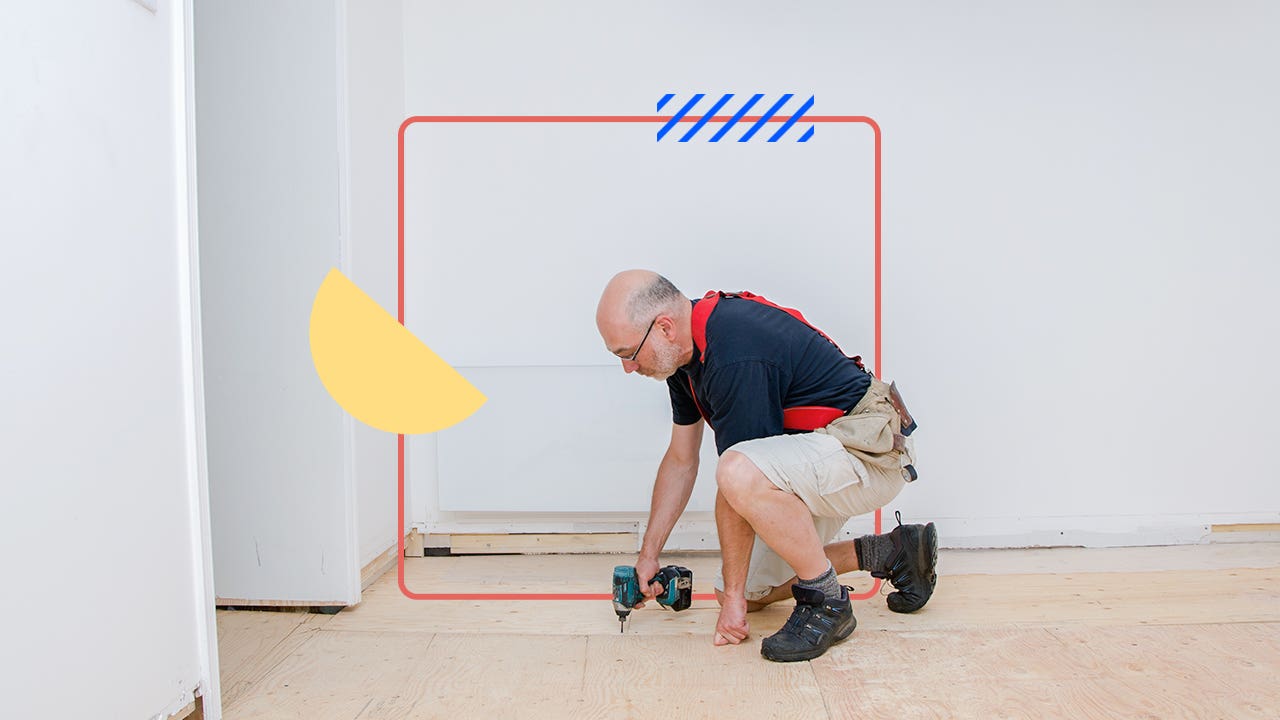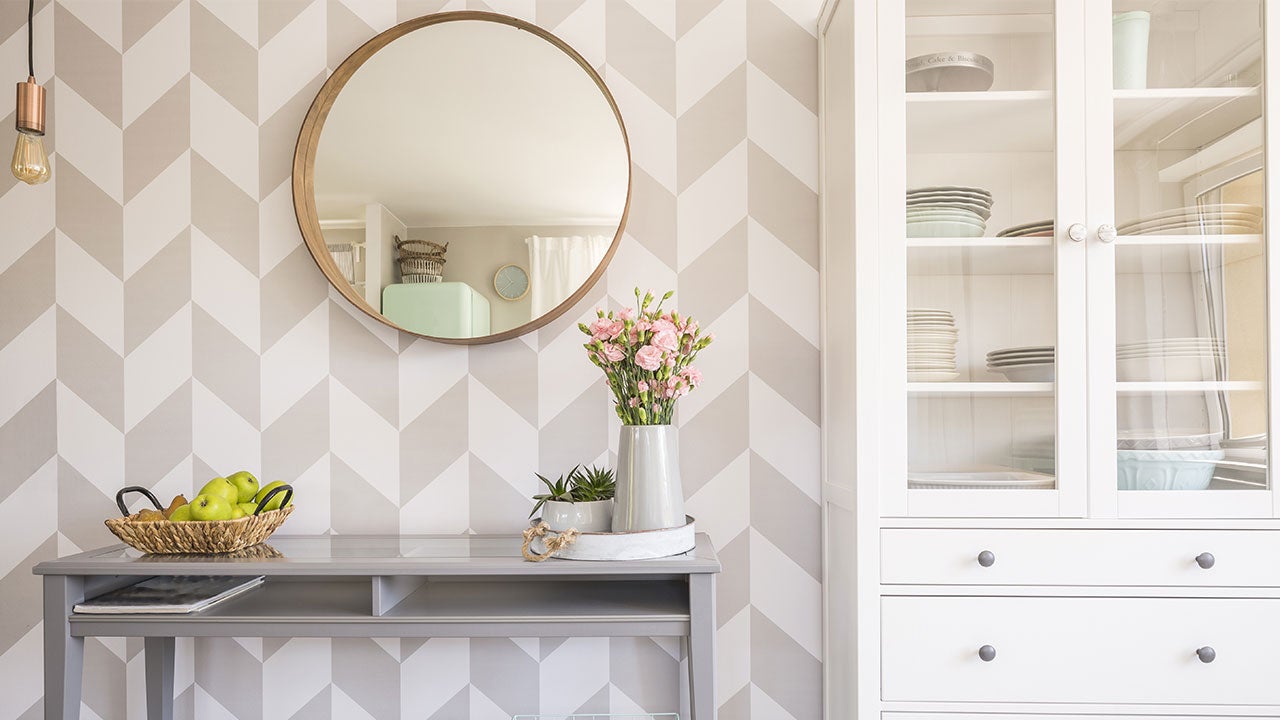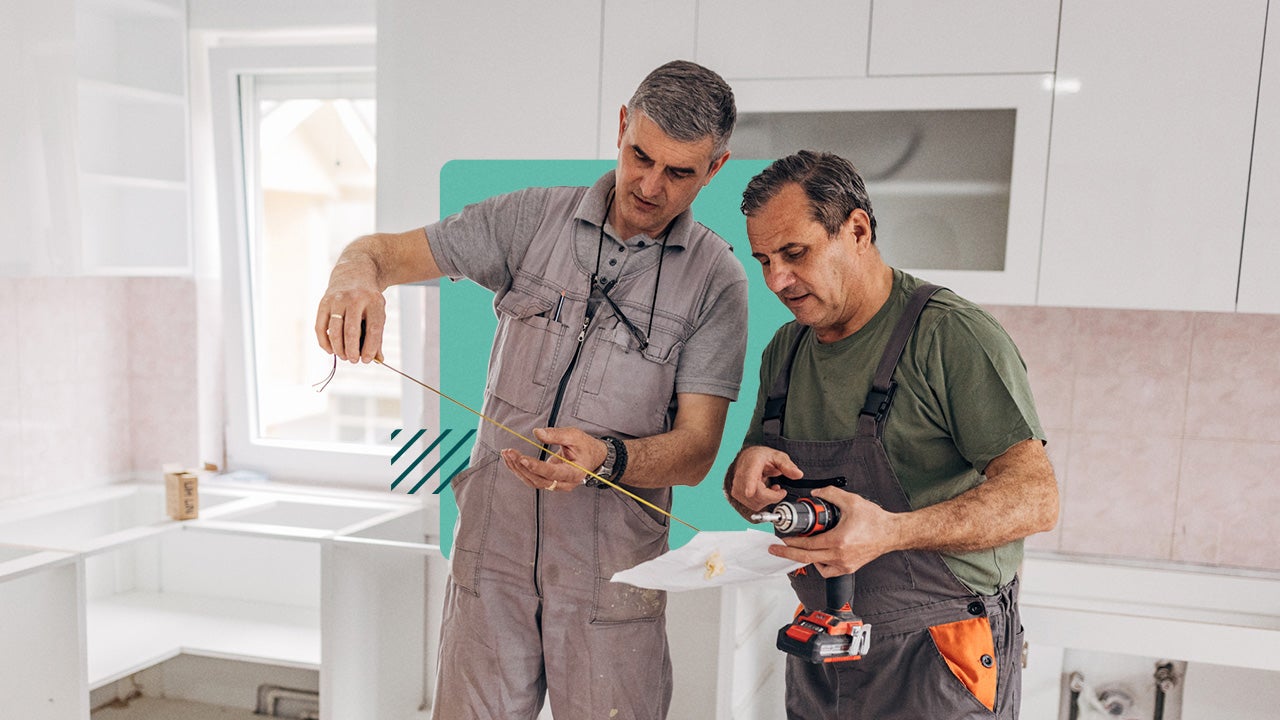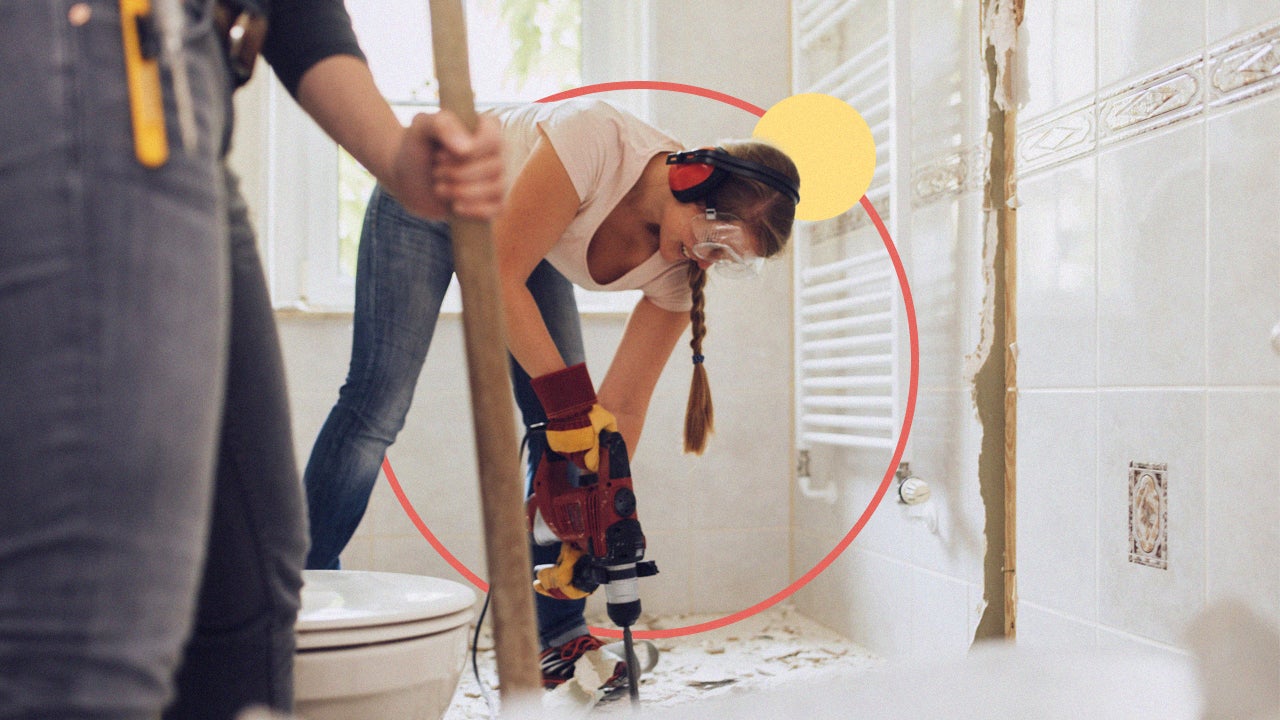How much does it cost to finish a basement?

Finishing a basement can be a savvy homeowners’ move. Not only will you expand your home’s usable square footage without having to alter its exterior, but you will likely add value to it too: The average basement conversion to a living area can deliver as much as an 86 percent return on investment, according to the National Association of Realtors’ “2022 Remodeling Impact Report.”
But it’s also a significant financial investment: Nationally, the average cost to finish a basement is $18,400, according to contractor-search service Angi. However, costs can vary greatly depending on where you live, the basement size, labor costs and the extent of the renovation. On the low end, finishing a basement could cost just under $3,000, while on the high end you could spend nearly $35,000.
Key takeaways
- The average cost to finish a basement is about $18,000, running $7-$23 per square foot
- The expense of a finished basement is influenced by the size of the space, the quality of the materials, the type of basement and labor costs
- Finishing a basement can offer as much as an 86% return on investment
- Items to include in a budget for a finished basement might include flooring, waterproofing, lighting, electricity, furniture, ceiling, drywall, insulation, lighting, HVAC, plumbing, painting, decor and permits, as well as walls, doors and windows
Remodeling a basement vs finishing a basement
Although homeowners often use the terms interchangeably, there’s a big difference between finishing a basement and remodeling one. Understanding how the construction pros define the two can save a lot of confusion and money.
A basement finishing project involves upgrading a basement area that is not currently habitable, because it lacks such things as drywall, insulation, plumbing and finished flooring. It’s a raw space, in other words.
A basement remodeling project, on the other hand, typically involves making renovations to an already finished area, meaning one that is livable (if not necessarily comfortable) in its current condition. Of course, this can still be pretty extensive: Generally this type of project involves making structural changes to the space, reorganizing its layout and adding or removing walls. It could even involve gutting the space entirely.
As a result, remodeling a basement runs somewhat higher than finishing a basement. Remodeling a finished basement averages $21,801, with most projects ranging from $12,084 to $33,328, according to Angi — or up to $50,000 for a high-end job. In contrast, finishing a basement averages just around $18,400 and tops out at $34,500 — though it can be more expensive if you’re building the basement from scratch. That might run up to $37,50, if you include foundation work.
Factors to consider when calculating the cost of a finished basement
These features play into the price of finishing basements.
Size of the basement
Since most basement-finishing jobs are figured per square foot, the size of your basement can dramatically influence the overall cost of your project. A basement between 300-700 square feet is considered small, while anything over 2,000 square feet qualifies as oversized. According to Angi, most basement finishing projects run between $7 to $23 per square foot (a full remodel is $30-$75 per square foot).
Type of Basement
The kind of basement you have may also affect costs. Full basements run the gamut of your home’s main level, while a partial basement does not extend across the entire blueprint. Since a partial basement will have a smaller square footage and involve less materials, it’s usually cheaper to finish.
On the opposite end of the scale is a walkout basement: a full-size space that has its own private entrance, and often windows and an additional door as well. Typically placed against a hill, they are almost like an additional subterranean story for the home.
Labor Required
According to real estate website Redfin, the labor costs for finishing a basement range between $25-$100 per hour. You may also need a general contractor to manage the project, as the work of several specialists (plumbers, electricians, HVAC pros) often have to be coordinated. Figure on labor running at least 20 percent of the overall project cost.
Permits
Remodeling or even just finishing a basement may require a building permit, especially if a lot of electrical and plumbing work is involved. They’ll cost an average of $1,200 to $2,000, according to Angi.
Materials
Materials make up the bulk of a basement job’s cost — 70 percent, Angi says. Almost every material used varies based on quality and durability, and the range can be large — $5.25 to $21 per square foot. How expensive you want to go depends of course on how extensively you’ll be using the basement — but since basements are subject to moisture and temperature swings, and problems they develop can permeate a house, don’t skimp too much (see “Features to consider” below).
Furnishings
Furnishings fall into the remodeling realm and again, there’s a huge range here, depending on how you intend to use your basement — from $45,000 for a full-fledged kitchen to $450 for a ping-pong table. The point is, leave room in your budget to furnish and decorate, lest your beautiful new space go empty.
Features to consider when finishing a basement
Framing
The total cost of framing — building the walls’ internal skeletons — depends on the number of rooms in the finished basement. Framing costs range between $7 and $16 per linear foot, according to HomeAdvisor.
Insulation
The national average for spray foam insulation, professionally installed, is about $2,568, according to HomeAdvisor. Blown-in insulation is less expensive at $1,440 on average and fiberglass batts can be as cheap as $300 to $600 to install.
Flooring
Floor-related costs will be based on whether you plan to finish with bare concrete or use alternate materials like carpet, hardwood, vinyl or laminate. No matter which approach you take, you expect the price tag to be between $1,500 to $4,500. If you opt for luxurious hardwood, it can cost as much as $15 per square foot, according to home design site Houzz, while carpeting ranges from $1 to $10 per square foot. Laminate floors can be $4 to $6 per square foot.
Waterproofing
Waterproofing work might include installing sump pumps and drains. Expect the price-tag for this portion of your basement project to vary from $500 to as much as $3,500, according to Thumbtack.
Door installation
New doors usually cost between $250 and $350 according to Thumbtack — though high-end models can be $1,199. Plan on paying for the door itself, any related delivery costs, plus the labor costs of a carpenter or your contractor.
Lighting installation
Basements usually lack a lot of natural light, so a lighting budget is important. Costs can range from $90 to $250 per fixture, but can mount as high as $500 for luxe models.
Drywall
The panels themselves are priced between $12 to $20 each. It costs between $1.50 and $3 per square foot to have them installed, according to HomeAdvisor.
How to finance finishing your basement
Even if you have the money available to cover your basement remodel costs, you may want to consider financing options. There are a variety of home improvement loans to help you finish your basement.
Home equity loans
A home equity loan borrows from the equity in your home while using the home as collateral. Also referred to as a second mortgage, it’s often used for large expenditures, like finishing a basement. Like personal loans, home equity loans have fixed interest rates and a set repayment term, although interest rates are usually lower. The interest may also be tax-deductible, if you itemize on your tax return.
Home equity line of credit
A home equity line of credit, or HELOC, uses the same concept as a regular home equity loan in that it allows you to borrow against the equity in your home while using the home as collateral. It too may offer a tax break.
The biggest difference is that the line of credit is open, or revolving, and is usually accompanied by a variable interest rate — somewhat like a credit card: You can borrow against it and pay it back, and then borrow against it again (up to your limit) A HELOC can be a perfect solution for a large project, such as refinishing a basement, where costs may not be set in stone. However, its flexibility makes it easy to go over budget.
Personal loans
Personal loans pay a fixed amount that is distributed in a lump sum. It’s structured like a standard loan: Once it closes, you will be charged interest immediately and will make your first principal and interest payment after one month.Repayment terms are flexible, typically allowing you to select a repayment period between 12 and 60 months.Finishing a basement is the type of expenditure that a personal loan may work well for, if it’s not too big and you’re comfortable with the payment schedule.
How to save money when finishing a basement
Home improvement projects can be pricey, but there are ways to cut back on costs without sacrificing quality.
DIY options
If you are undertaking a large home improvement project like finishing a basement, it may not make sense to take a fully DIY approach. Still, there may be some jobs that you can do to reduce your overall cost.
Some parts of a home improvement project that are more DIY-friendly include painting, tiling and clean-out.
“If you plan to do some of the remodel yourself, take inventory of the tools you have and the ones you’ll need, and include those in the materials budget,” says Bailey Carson, home care expert at Angi. “And, since eight out of 10 DIYers over the past 18 months made either minor or major mistakes during their projects, you should also play it safe and budget an extra 5 to 10 percent for any unexpected costs.”
Go for stylish but affordable
To lower your costs, consider selecting mid-grade materials that can be purchased as seconds or floor models. For instance, it’s possible to purchase gently used fixtures and other items from Habitat for Humanity’s ReStores, which have locations throughout the United States. ReStores carry everything from appliances and lighting to building materials. As an added bonus, the proceeds from sales support the non-profit.
When it comes to decor for your newly finished basement, you can try sourcing second-hand furnishings or accents that are still in good condition from platforms such as OfferUp, Facebook Marketplace and Nextdoor.
When shopping for any of these items, think about the ongoing use of the area and opt for less expensive options on things that will have no detrimental long-term effect to your living space. For example, it’s not wise to save money on poor-quality building materials, but you could select low- to mid-grade light fixtures and switch plates.
Track your budget
With a little research of the various costs involved and an assessment of what you can afford, creating a budget is the easy part. What often gets neglected is tracking and sticking to your budget. Keep a log of all expenses associated with your home improvement project and deduct them from your budget categories regularly. If you find that you’re about to overspend in one category, find another category to deduct from to avoid going over budget.
Items to include in a budget for a finished basement might include flooring, waterproofing, lighting, electricity, furniture, ceiling, drywall, insulation, lighting, HVAC, plumbing, painting, decor and permits, as well as walls, doors and windows, says Bailey Carson, home care expert at Angi.
How much value does finishing a basement add?
Pre-pandemic, 70 percent was the usual figure cited for a finished basement’s return on investment. The value may have risen of late. Converting a basement into a living area typically returns 86% of the project cost, according to the National Association of Realtors’ 2022 Remodeling Impact Report. But in terms of intangible value, it can add a lot more.
For one thing, finishing a basement can be a practical, cost-effective way to effectively increase the size of your home — enhancing the living space without having to alter its exterior or external appearance. And it’s a versatile project: Finished basements can be used for everything from bedrooms to gyms to home theaters.
“The absolute best bang for your buck and the greatest return on investment as a homeowner is renovating your basement,” says Steckel. “Typically, all of the structural and major systems work is already in place so basement renovations can be faster and less complex.”
To decide if your own basement is worth finishing, you should consider the other homes in your area and what people who move into the neighborhood may be looking for. If you discover that finished basements are pretty popular, you will likely see a return on your investment, increasing your home’s value. In fact, it might decrease your home’s competitive resale value if they’re highly typical in the ‘hood and you don’t have one.
Next steps in finishing your basement
Define your finished basement goals
Before you get started, write down your short- and long-term goals for your finished basement. Have a well-documented plan that outlines exactly what you want in a finished basement. What will the space be used for? What kind of design do you prefer? Will you need plumbing? Thinking about these factors in advance can help you save money in the long run.
“Is it a revenue-generating apartment, a place for house guests or kids to play, or even a comfy place to watch movies at night? Or, is there really no end goal, but you’re looking to make all square footage usable?” says David Steckel, home expert at Thumbtack.
Steckel suggests first settling on a high-level goal or scope of work. For example, if you’re building out a rental, you’re going to need a kitchen, bathroom, bedroom, separate entrance, and fire safety precautions.
Next, go look for inspiration for your space. You can check Instagram, Pinterest, or home remodeling websites. Steckel recommends “compiling at least 20 inspiration images and putting them into a folder or saving them in an idea book. Doing this will organically help you determine your aesthetic, expectations and also help add things to your scope of work.”
Create a finished basement budget
Once you know what you’re looking for in a basement, you can decide how much you can afford to spend to finish it. Develop a budget, broken down by the cost categories listed above.
When creating a budget, the most important step is to figure out what is the absolute maximum that you are able, and comfortable with, spending in cash and taking on as debt. This maximum should also take into account an additional 20 percent for change orders or extras that are inevitable with all major renovations, says Steckel.
You’ll also want to discuss your budget restrictions with contractors upfront. “Do not start a project until you have a number that’s realistic and acceptable for every single line item,” says Steckel. “You can adjust materials until you get the right combination of what you want to have and what you can afford to have.”
“From there, work with your hired pros to determine their costs based on their hard quotes and begin creating a template to keep track throughout the process,” says Steckel.
Brush up on basement codes
Check the legal requirements in your area before work begins. For example, a bedroom may require an egress window in case of fire, and bathroom plumbing will need to be up to local standards. This process includes pulling any permits that are required to do home improvement work in your area.
As a simple rule of thumb, removal and replacement of existing products or features does not require a permit, says Steckel. “Think renovating your bathroom but not changing the location of any plumbing or putting in a new door or window system in the same opening.”
Decide whether to hire a pro or do it yourself
If the project is simple and no permits are required you may be able to complete the work yourself. But in many cases, you’ll be better off with a professional overseeing your basement finish. They’ll also handle getting permits and making sure your renovation is up to code.
You’ll want to obtain estimates from at least three different contractors; be sure to ask for customer referrals from each one. It’s also important to be sure you’re hiring a contractor that is licensed, bonded and insured. Without these credentials in place, you will be the one held liable should anything go wrong during the course of the project, including workers getting injured.
You may also like

10 home renovations you can DIY on a budget

How much do kitchen cabinets cost?

How much does a bathroom remodel cost?



